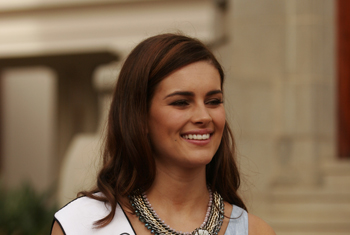An article, co-authored by Kovsies’ own Miss World, Rolene Strauss, was published recently in a medical journal

Rolene Strauss |
The article, which deals with research on the incidence of multiple losses by children, was published in South African Family Practice.
The study was part of the third-year research project for medical students in our Faculty of Health Sciences. Rolene worked with fellow students, Leischen Branders, Mirandie Claassen, Darienne Saaiman, and Andrea van Staden. Prof Gina Joubert from the UFS’s Department of Biostatistics and Prof Hanneke Brits were the module and study leaders.
In this study, a number of cases involving Bloemfontein children experiencing loss, as well as their reaction to it, were examined.
They divided the incidents into categories in order to address the broad definition of ‘losses’.
Approximately 69% of the children in the study have experienced three or more instances of loss in their lives. About 29% of the children have experienced loss in the category Personal Loss (assault, chronic and terminal illness, amputation, malnutrition, disability, abortion, and miscarriage). The greatest number of losses occurred in the category Interpersonal Loss (87%). This group of children has had to deal with the death of one or more parents/caregivers, drug and alcohol abuse, domestic violence, divorce, homelessness, and instability. In the category, Environmental Loss, xenophobia, unsafe living conditions, inadequate support, poverty, and unemployment were looked at. A total of 82% of the children in the group have experienced losses.
Prof Hanneke Brits, study leader of the group, says the extent of multiple losses by children is a topic that hasn’t been investigated widely.
“The study shows that children should receive special attention in order to help them process the trauma. Supportive care and inter-professional services play a major role in this regard.”